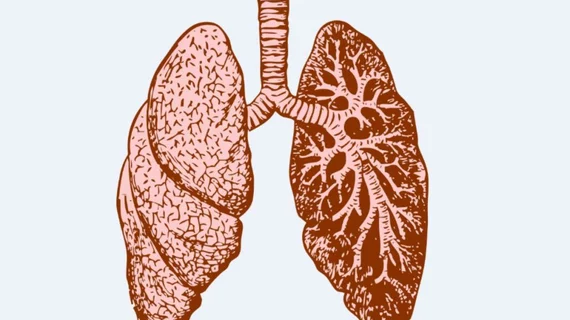12.5% of NSCLC patients in Canada need palliative radiotherapy, don't receive it
More than half of non-small cell lung cancer (NSCLC) patients in Ontario, Canada, are in need of palliative radiotherapy, according to data published in Radiotherapy & Oncology—but many are never treated.
Palliative radiotherapy (RT) isn’t a necessity in patients with NSCLC, corresponding author William J. Mackillop, MD, FRCPC, and colleagues at Queen’s University wrote, but in a population where 85 percent of patients ultimately die of the disease, it can improve quality of life in a cost-effective way.
In patients with locally advanced cancer, palliative RT can control hemoptysis, cough and dyspnea, Mackillop et al. said. It helps manage pain in those with bone metastases and neurological difficulties in those with brain metastases. Still, its use isn’t ubiquitous.
“There is evidence that palliative RT use varies widely among different regions and among different hospitals within the same health system,” Mackillop, a radiation oncologist and professor in the departments of oncology and public health sciences at Queen’s, wrote. “Optimizing the outcomes of advanced NSCLC requires that palliative RT should be available to every patient who would be expected to benefit.”
Mackillop and his co-authors sought to establish an appropriate rate of palliative radiotherapy in Canada, and in doing so analyzed data from more than 20,000 NSCLC patients who died of their disease in Ontario between 2006 and 2010. Multivariate analysis identified factors that affected palliative RT use, allowing the research team to establish a benchmark population with unimpeded access to the therapy.
The researchers found that 56.5 percent of that benchmark population in Ontario had at least one course of palliative radiotherapy in the last two years of their life. When standardized to the case mix of the overall population, the population benchmark rate came out to 56 percent.
“The actual palliative RT rate in the province was 49 percent,” Mackillop et al. said. “This means that 12.5 percent of the patients who needed palliative radiotherapy did not actually receive it.”
The extent of that shortfall varied among local hospitals, the authors wrote, and will change as practices and case mixes evolve. Still, they said they believed the gap would be similar in the U.S., since lung cancer incidence and survival rates are similar between Canada and U.S.
“As far as we can determine, the benchmarks reported here represent the rate of use of palliative radiotherapy for NSCLC, where there are no health system-related barriers to RT access and where treatment decisions are made under conditions that support expert, multidisciplinary decision-making,” Mackillop and co-authors wrote. “We do not claim that these benchmarks represent an absolute measure of the need for palliative RT, but they may be useful as demonstrably achievable targets that are grounded in real-world observations.”
The researchers said their data helps underscore the lack of palliative RT treatment in developed countries but will need to be supplemented by other statistics in the future.
“Our study shows significant unmet need for palliative radiotherapy for NSCLC in Ontario, and this represents an important opportunity to improve the quality of life for many incurable patients,” they said. “Further studies will be required to determine how far this applies to the use of palliative RT in other contexts, or to other palliative treatments.”

